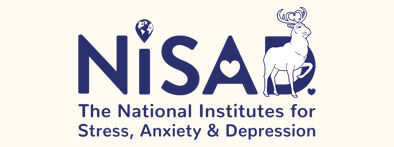In the recent heatwave that spread across Europe, you may have noticed a change in your appetite.
It’s a common experience that we tend to feel less like eating during hot weather and have a preference for cooler and lighter foods.
This was particularly noticeable to me recently, on one of the days when the temperature soared above 30 °C: after a couple of hours wandering around an air-conditioned gallery, I felt like tucking into a bowl of warming soup, and made a beeline for the café. Not fancying the flavour on offer, I left the gallery – feeling very hungry – and walked for 20 minutes or so in the scorching early afternoon heat, intent on getting some tasty, hunger-busting street-food.
By the time I reached the food stalls, I was very hot. I’d also completely lost my appetite along the way. None of the options – which would have been very enticing just a half-hour before! – looked at all appealing. With no light or cool options in sight, and the odd mental picture of ice-creams and ice-lollies floating around my mind, after rationalising with myself that I was just too hot for a proper lunch, with relief, I settled on a sorbet.
The sudden transformation in my appetite from ‘MUST EAT AS SOON AS POSSIBLE’ to ‘really can’t be bothered with food’ got me thinking about just how the hot weather affects our appetite, and a bit of research later, I came across an interesting review of findings related to the effects of heat on appetite.1
Much could be explored here but what struck me most, in light of my experience, was how changes to our natural environment can disrupt our bodily processes. Specifically: air conditioning. And this could be really important if we’re aspiring to take advantage of the hot weather to lose body-fat.
Why do we eat?
The most evident reasons are to provide our body with energy and nutrients and to feed our gut bacteria so that we can function optimally. Yet there’s another important reason for eating: heat.
Food, through the process of chewing and digestion, also provides us with warmth. Maintaining appropriate body temperature is essential, so our body also uses food for the production of heat in our body to keep us warm.
On the flip side, if we get too hot, our body does all it can to dissipate heat. In this situation, when considering our energy requirements, our body also needs to consider the amount of extra heat that will be released through eating to avoid creating more heat than it can dispose of effectively.
It’s been argued that, at least in the short-term, heat regulation trumps energy requirements, meaning that with a high temperature, we will lose our appetite to get rid of excess heat in preference to eating in order to satisfy our energy needs.
Another part of this thermoregulation mechanism has been shown in animals having faster gastric emptying when it’s cold. By the stomach emptying more quickly, the need for another meal comes around sooner.
It’s theorised that the slowing down of digestion when it’s hot, with slower gastric emptying, perhaps reduces the amount of heat being produced.
What causes excess body-heat?
Although there will be physiological differences in how we all respond, the following things can create excess heat in our bodies and suppress our appetite:
Environment
A hot and humid climate, or even an overheated room, can greatly reduce how hungry we feel. Interestingly, it’s typically just the onset of eating that’s affected; where we don’t feel like eating in the first place. By contrast, if we start eating something, heat then takes a backseat and it is other mechanisms that signal when we’re full.
Activity
Strenuous exercise creates a lot of heat and can dampen our appetite in the short-term, such as immediately after exercising, while our body dissipates the heat. However, strenuous activity may well increase our appetite in the longer term.
We rarely feel like doing strenuous activity in extreme heat, which is a useful adaptive response as the activity creates more heat, needs more energy and can cause a fluid imbalance.
If moving to a hotter climate, activity can be gradually increased as we acclimatise to the heat.
Eating
As already mentioned, eating creates heat. Although, research suggests that this thermogenic effect is blunted in obesity: the more body-fat we have the less heat is produced, and the less energy expended.
Generally though, if we eat hot food in a hot climate, we can soon feel overheated, so we may feel less inclined to tuck in. The exception to this tendency is very cold food, where the cooling effect of the food outweighs the heat produced from digesting it.
Stress
Our body temperature increases when we feel stressed as our body is preparing for a physical challenge. For some of us, this reaction suppresses our appetite and we eat less; though for many of us the appetite-suppression response has been over-ridden by the effects of dieting or the drive of emotional eating.
Fever:
If we have a bacterial infection, our body may raise its temperature to kill off the pathogens. As the higher temperature is a defence mechanism, it may possibly be that we lose our appetite in order for our body to starve the bacteria rather than reduce our temperature; or the temperature could have the combined effect of killing pathogens and reducing appetite (in order to dissipate the heat) and in doing so starve them.
I wonder then if there is some truth in the saying, ‘feed a cold and starve a fever’ although it’s important to note that the fever referred to is probably one caused by a bacterial infection and not a viral infection, which may be better fought off with good nutrition to support the immune system.
Is it possible to use body-heat to lose body-fat?
The literature review raises lots of questions and proposes plenty of suggestions for further research. As the review notes, one of the key elements to consider when intending to reduce body-fat is the ‘set-point’ that our body has adapted to.
When we lose body-fat, and particularly if this is done rapidly, our brain and body endeavour to return us to the size we were before losing the body-fat. The review study notes that if the body-fat set-point isn’t lowered, and we become ‘underweight’ relative to our set-point, this can result in stressful physical and psychological consequences to our eating patterns and emotional wellbeing.
It’s not yet clear and would be important to know, whether exposure to heat that decreases appetite and thereby reduces body-fat, also lowers our body-fat set-point. This may well be the case, as less insulation (as provided by body-fat) is required in a hotter climate, and here a reduction in body-fat would aid thermoregulation – but more research is needed. And if this is the case, for how long and how continuously would we need to be exposed to heat for the set-point to be lowered?
Many of the heat sources noted above may stimulate a short-term drop in appetite as our body dissipates the heat. However, once the heat has gone our body may increase our appetite to make up for the energy lost through usage as well as lower calorie intake.
Without a change in set-point, our body will compensate.
‘So how do I change my set-point?’, I hear you ask.
As the literature review shows, our bodies are wonderfully clever at regulating our thermic and energy needs. In normal circumstances, however, our modern lives have made us very skilled at over-riding the signals that tell us when we need food (true hunger) and when we’re sated.
By learning to recognise these signals – which may involve addressing beliefs, values and conditioning as well as our emotional wellbeing – it becomes easier to choose to eat when truly hungry and feel OK with not eating at other times.
As awareness of our hunger and fullness becomes a natural response, then we find our set-point naturally lowers.
Which brings me to the air-conditioning. Although the summer’s hot weather may not be enough in itself to lower our body-fat set-point, it could provide a springboard for us to get back in touch with our natural hunger signals, and thereby lower our set-point so that we can sustainably reduce body-fat.
We can embrace the warm weather partiality for lighter and cooler foods, trusting in our body’s wisdom, as we need fewer calories to keep us warm. And let’s be wary of that disruptor to our natural environment: air-conditioning.
The review study reports how restaurant and shop air-conditioning increased consumption on hot days, where people would otherwise typically have had a lower intake of food. Acute changes in temperature – going suddenly from hot to cold – may affect our choices, with unfavourable results.
An animal study showed how rats that were living in a warm environment but were fed in a cold environment ‘gained much more weight’ than the rats that remained in a warm environment to feed. This suggests that if we spend the majority of our time in the heat but eat in an artificially cooled environment, we may eat more than we need, potentially having consequences both for the amount of body-fat we have and our ability to dissipate heat when we return to the hotter environment.
Losing body-fat is complicated in our modern world, where we have so many distractions and deviations from our natural instincts. Becoming mindful of our true hunger and the things that might disrupt it can be a powerful tool in supporting us as we lower our body-fat set-point and lose body-fat sustainably.
Follow us at NoWeigh to get more insights into how you can manage the distractions and deviations that are preventing you from being the size you want to be.
Sources
- Peter Herman. Effects of Heat on Appetite. Nutritional Needs in Hot Environments: Applications for Military Personnel in Field Operations. Institute of Medicine (US) Committee on Military Nutrition Research; Marriott BM, editor. Washington (DC). National Academies Press (US) 10 (1993). https://www.ncbi.nlm.nih.gov/books/NBK236229/
- K.R. Segal, B. Gutin, J. Albu, F.X. Pi-Sunyer. Thermic effects of food and exercise in lean and obese men of similar lean body mass. Endocrinology and Metabolism 252 (1) (1987). https://journals.physiology.org/doi/abs/10.1152/ajpendo.1987.252.1.e110
- K.R. Segal, B. Gutin, A.M. Nyman, F.X. Pi-Sunyer. Thermic effect of food at rest, during exercise, and after exercise in lean and obese men of similar body weight. The Journal of clinical investigation, 76 (3), 1107–1112 (1985). https://doi.org/10.1172/JCI112065. https://www.ncbi.nlm.nih.gov/pmc/articles/PMC424000/
- Cell Press. “Feed a virus, starve a bacterial infection?.” ScienceDaily. 8 September 2016. Retrieved 17 August 2020. https://www.sciencedaily.com/releases/2016/09/160908130545.htm

Alison Easton BA(Hons) HPD DipCHyp
Alison is NISAD’s Director of Clinical and Creative Development
She will draw on her long experience as a clinician to provide support in our new ELK.Health online clinics and is a substantial, and much valued, a contributor to the creation and development of ELK.Health’s #CertainAboutUncertainty, CalmBaby, NoWeigh and Type2.Club programmes.


